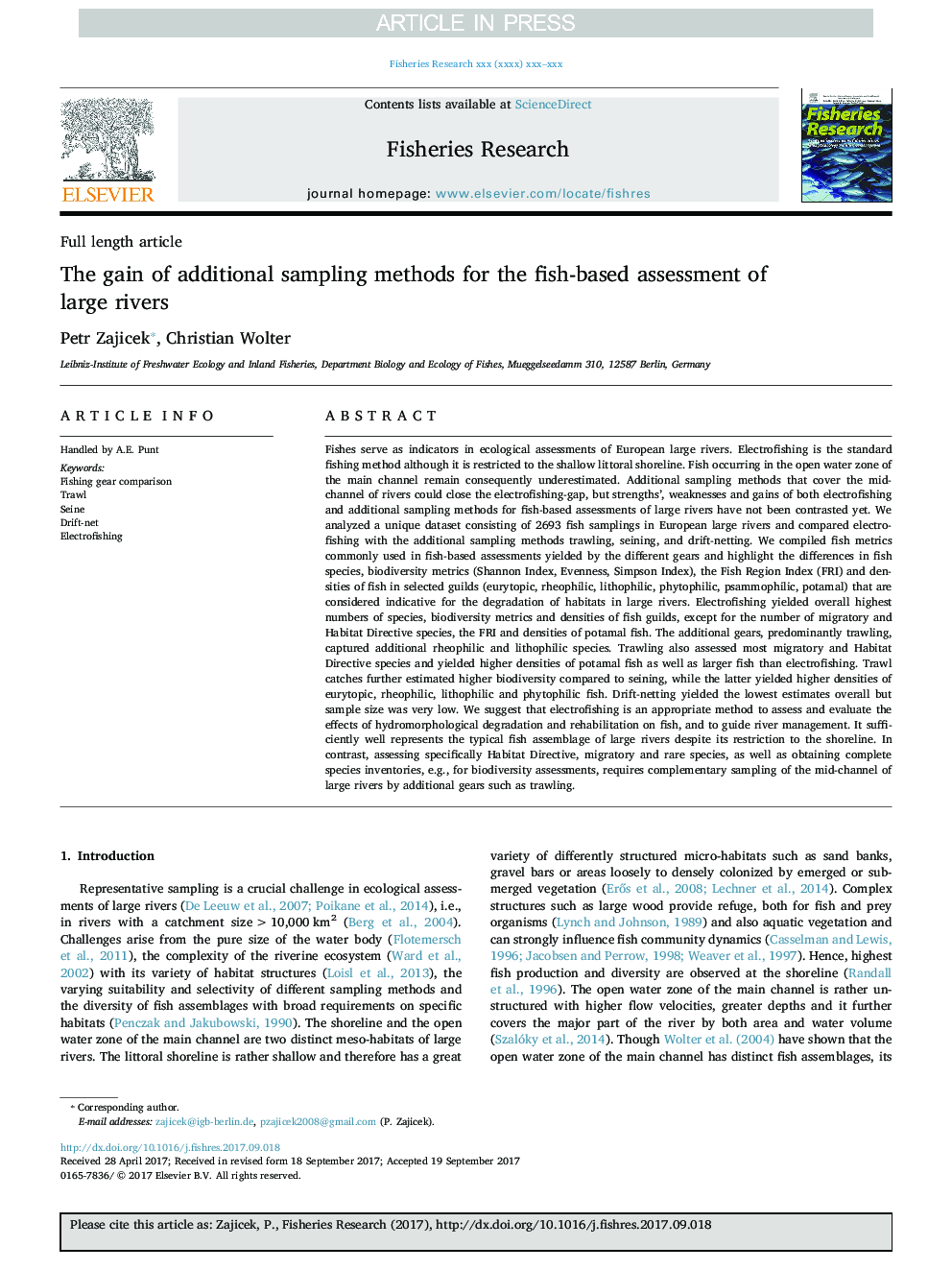| کد مقاله | کد نشریه | سال انتشار | مقاله انگلیسی | نسخه تمام متن |
|---|---|---|---|---|
| 5765436 | 1626773 | 2018 | 10 صفحه PDF | دانلود رایگان |
عنوان انگلیسی مقاله ISI
The gain of additional sampling methods for the fish-based assessment of large rivers
ترجمه فارسی عنوان
به دست آوردن روش نمونه گیری اضافی برای ارزیابی مبتنی بر ماهی رودخانه های بزرگ
دانلود مقاله + سفارش ترجمه
دانلود مقاله ISI انگلیسی
رایگان برای ایرانیان
موضوعات مرتبط
علوم زیستی و بیوفناوری
علوم کشاورزی و بیولوژیک
علوم آبزیان
چکیده انگلیسی
Fishes serve as indicators in ecological assessments of European large rivers. Electrofishing is the standard fishing method although it is restricted to the shallow littoral shoreline. Fish occurring in the open water zone of the main channel remain consequently underestimated. Additional sampling methods that cover the mid-channel of rivers could close the electrofishing-gap, but strengths', weaknesses and gains of both electrofishing and additional sampling methods for fish-based assessments of large rivers have not been contrasted yet. We analyzed a unique dataset consisting of 2693 fish samplings in European large rivers and compared electrofishing with the additional sampling methods trawling, seining, and drift-netting. We compiled fish metrics commonly used in fish-based assessments yielded by the different gears and highlight the differences in fish species, biodiversity metrics (Shannon Index, Evenness, Simpson Index), the Fish Region Index (FRI) and densities of fish in selected guilds (eurytopic, rheophilic, lithophilic, phytophilic, psammophilic, potamal) that are considered indicative for the degradation of habitats in large rivers. Electrofishing yielded overall highest numbers of species, biodiversity metrics and densities of fish guilds, except for the number of migratory and Habitat Directive species, the FRI and densities of potamal fish. The additional gears, predominantly trawling, captured additional rheophilic and lithophilic species. Trawling also assessed most migratory and Habitat Directive species and yielded higher densities of potamal fish as well as larger fish than electrofishing. Trawl catches further estimated higher biodiversity compared to seining, while the latter yielded higher densities of eurytopic, rheophilic, lithophilic and phytophilic fish. Drift-netting yielded the lowest estimates overall but sample size was very low. We suggest that electrofishing is an appropriate method to assess and evaluate the effects of hydromorphological degradation and rehabilitation on fish, and to guide river management. It sufficiently well represents the typical fish assemblage of large rivers despite its restriction to the shoreline. In contrast, assessing specifically Habitat Directive, migratory and rare species, as well as obtaining complete species inventories, e.g., for biodiversity assessments, requires complementary sampling of the mid-channel of large rivers by additional gears such as trawling.
ناشر
Database: Elsevier - ScienceDirect (ساینس دایرکت)
Journal: Fisheries Research - Volume 197, January 2018, Pages 15-24
Journal: Fisheries Research - Volume 197, January 2018, Pages 15-24
نویسندگان
Petr Zajicek, Christian Wolter,
